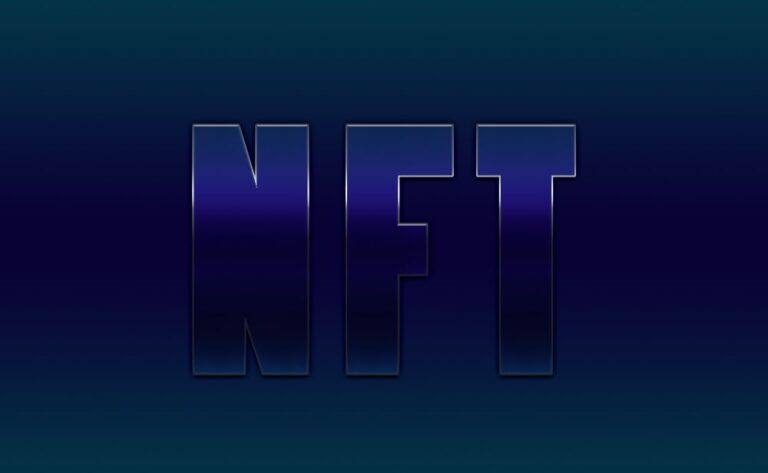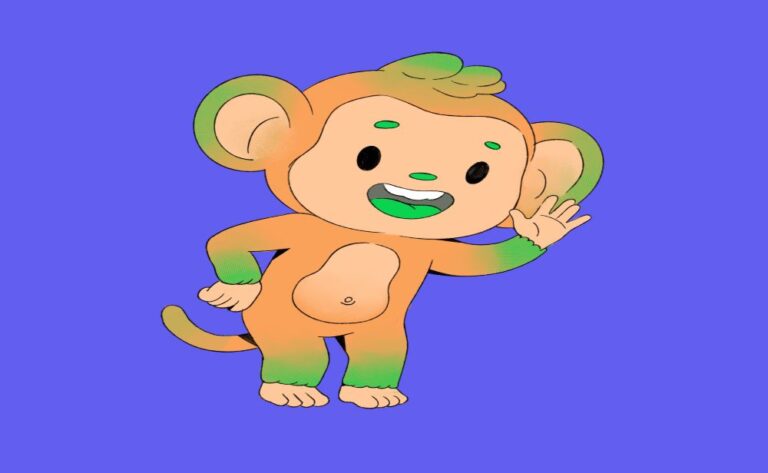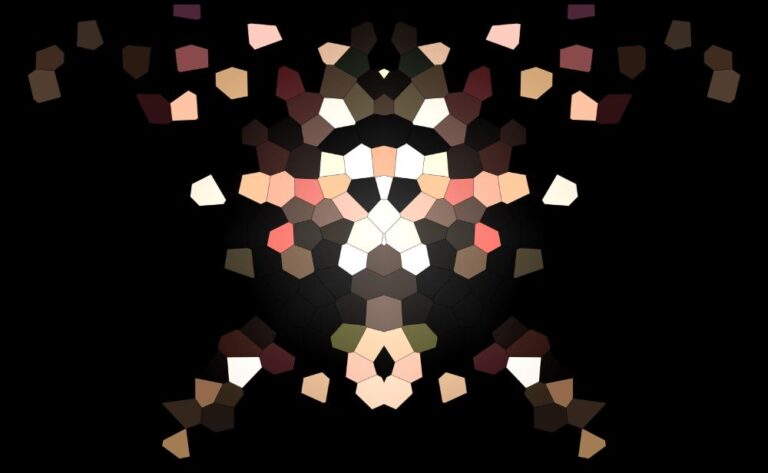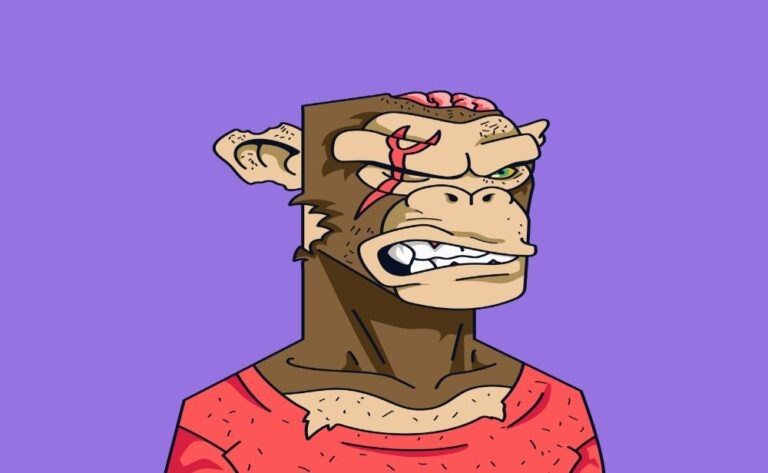
NFT has enabled collaboration between artists and sporting organizations. There are numerous projects available, however we will inform you of the top NFT sports projects. Some of these NFTs are produced by major sports organizations, such as the NBA, while others are written by independent authors. Continue reading to learn how sport fits within this digital space.
Papi multiplied by Auston Matthews (1-of-1 Edition)
Auston Matthews x Papi (1-of-1 Edition) is an Auston Matthews x The 34 Collection NFT collectible. Papi is the nickname by which professional ice hockey center Auston is well known. This NFT is a unique, one-of-a-kind item that will never be produced again. This item is digitally autographed by Austin, plus the purchaser will also receive a jersey signed by Austin with a special note. Additionally, the owner will receive two tickets to a game of their choosing.
Formula 1 Grand Prix de Monaco 2020 1A
Formula 1 Grand Prix de Monaco 2020 1A is a valuable NFT within the F1 Delta Time video game. This collectible commemorates the Monaco Grand Prix, which has been a part of Formula One since 1950. The Grand Prix de Monaco is one of the in-game events, and the owner of this NFT has got a five percent stake in the entire event. In other words, the owner will collect five percent of all REVV entrance fees for all races held during this in-game event.
The Heritage
The Legacy by Floyd Mayweather Jr. is an NFT depicting Floyd’s entire career. You will receive a video that depicts Floyd’s journey from his youth to his fame and wealth. In addition to the video preview, the customer received a high-definition (HD) video that was unlocked following the purchase. Additionally, the purchaser received a physical-digital art frame that can play the video as well as boxing gloves signed by Floyd Mayweather Jr. As if that wasn’t enough, he also had a one-on-one match with Floyd.
LeBron James Dunk
LeBron James Dunk is a non-fantasy trading card from the NBA Top Shot set. It is a video collectible depicting the moment when LeBron James dunked in Kobe Bryant’s style to honor the legendary baller. This collectible is the series’ third most valued card. At the time, it was sold for around 387 thousand dollars on the NBA Top Shot market.
(1-of-1) GRONK Highlights of Career Card
The (1-of-1) GRONK Career Highlight Card is a collectible NFT card, included in the Rob Gronkowski Championship Series set. It was produced in a single edition and represents Gronk’s four championships. In addition to the collectible, the purchaser of this NFT also received an opportunity to meet Rob Gronkowski and VIP All-Access Tickets to Gronk Beach. Additionally, he may attend one of his football games, as mutually agreed.
Seventieth Anniversary Edition
F1 Delta Time’s 70th Anniversary Edition is a collectible NFT token. This game features licensed F1 vehicles. All collectibles are usable in the multiplayer racing game F1 Delta Time. There are various levels of rarity, with apex being the rarest. This collectible commemorates the seventieth anniversary of Formula 1. At the time, it was sold for roughly 323 thousand dollars on the F1 Delta Time market.
Unique 2020-21 Cristiano Ronaldo
The 2020-21 version of Cristiano Ronaldo is a collectible NFT in a blockchain game. Sorare is a blockchain-powered fantasy football game in which players may trade cards representing actual footballers. This game development company quickly became the most valued startup in France and has a significant impact on the NFT market. This particular NFT is extremely rare, and it was sold for around $289 thousand on Sorare at the time.
Lineal, written by Tyson Fury
Lineal by Tyson Fury is a collectible video game featuring the world-renowned boxer Tyson Fury. In addition to the collectible, the owner of this NFT will receive a five-by-five-foot painting autographed by Tyson Fury. This NFT depicts the moment in which Tyson Fury was ecstatic after defeating Deontay Wilder. This boxing trilogy is one of the most awaited in history, thus it’s great to see it posted as an NFT.
Ouch Baby
Ouch Baby is a non-fungible token included in the ZED RUN blockchain sports game. In this game, we can each own a horse and race against one another. The horses can be bred several times per year. Ouch Baby is the most expensive horse in this game, and it was sold on the OpenSea marketplace for about $200,000 USD. It possesses certain really rare qualities that are crucial for this game. It is fascinating to observe a Matic network project with such success.
1-of-1 Warriors Six-time World Champion Ring Non-Technical and Physical Ring
Golden State Warriors’ 1-of-1 Warriors 6x World Champion Ring NFT & Physical Ring is an NFT. This ring is a combination of all six franchise championships. There has only ever been one such object produced. In addition to a cool animation, the first purchaser also received an actual ring custom-made by the renowned Beverly Hills jeweler Jason. The ring is comprised of 14k gold, 475 diamonds, and sapphires and weighs over 120 grams.
How can we rank the top NFT sports initiatives?
There are other unique sport NFT initiatives, but we cannot include them all on this list. Therefore, it was necessary to establish criteria for ranking these projects.
1. Impact – We award additional points to NFT sports projects that have a significant effect on the NFT or the real world. It’s crucial to let people know how wonderful the NFT technology can be, and what better way to do so than by creating an awesome project?
2. Who is the creator of this collection? Is it a robust market, a group of artists, a single artist, or a famous person? We favor renowned artists or publishers who will help the NFT expand its operations. Nevertheless, Ouch Baby is our runner-up because of how great and influential the initiative is.
3. Price – What was the selling price of the NFT? Due to the increased media coverage that results from higher prices, we favor higher sale prices. Some of the non-fungible tokens on our list have sold for close to one million dollars.
4. Type – What does the purchaser receive from this NFT? Is it merely ornamental, like a sports trading card, or can it be utilized within the game? Do you receive a physical item or anything else with this NFT purchase? Clearly, we favor those NFTs that offer something beyond the state of the art.
5. Marketplace – Where may this NFT be purchased? Are you required to create a unique wallet? We pick art that is selling well on the most reputable markets. One explanation is that the largest markets have the most stringent security procedures. Thus, games such as Sorare and F1 Delta Time feature fantastic marketplaces where you can purchase NFTs that you can afterwards sell on other marketplaces such as OpenSea.
What are NFT athletic endeavors?
On all marketplaces, NFT sports projects are among the most popular NFT categories. If you are unfamiliar with what an NFT is, it is a digital asset whose ownership can be easily verified on the blockchain.
The majority of people view NFTs solely as collectors, although there are numerous more applications. Sport is one of the many distinct categories available. Different sorts of sports NFTs exist, but more on that later.
Let’s just say that Sports NFT combines the world of sports with blockchain technology. This is accomplished via games, collectibles, sports event tickets, and other means. It’s a way to integrate athletics with the most advanced digital technologies.
Since the introduction of NFTs, numerous sporting organizations, such as F1, have seen the possibility to develop something new and offer a one-of-a-kind experience. This experience may be obtained by playing the F1 Delta Time game, which was included on our list of rankings.
You can practically compete against other players on some of the most well-known F1 tracks in this game. The unique aspect of this game is that the vehicles are actually NFTs. You are able to acquire several race cars that are visible to other players.
In addition to racing, players can possess a variety of assets in the game, such as the “Formula 1 Grand Prix de Monaco 2020 1A” example we discussed in the rankings. By acquiring such assets, players are able to generate passive income.
F1 Delta Time is not the only sport-related blockchain game. In addition to the previously mentioned ZED RUN, there are other others.
What types of NFT sports initiatives exist?
As previously stated, there are currently a variety of NFT sports projects accessible. We’ll run through a list of the most prevalent ones so you can understand the situation.
• Games – We’ve already covered some of the sports gaming initiatives, such as F1 Delta Time and ZED RUN, that include NFT technology within their game. The most prevalent use case for NFTs is as cosmetic items that players can purchase within the game. However, it is also feasible to design an NFT that generates passive income for its owner. There are numerous sport gaming usage cases.
• Trading cards — What was once present in confectionery and cigarette goods now resides on the blockchain as a non-fungible token (NFT). There are currently a number of companies producing trading card packs for various sports. Baseball, the NBA, football, UFC, and other sports utilize trading cards as non-financial prizes.
• Collectibles – You can find various collectibles on the majority of NFT markets. From unique collectibles such as the “Lineal by Tyson Fury” to player collections such as the “Rob Gronkowski Championship Series NFTs.” The majority of these collectibles consist of one-of-a-kind physical items that are shipped to the first buyer. Boxing gloves signed by Floyd Mayweather, one of the most famous fighters in history, are one example.
• Tickets – All tickets may become NFTs in the future. The reason for this is that once the NFT ticket is purchased, its ownership is permanently recorded on the blockchain. Consequently, it will be simple to verify ownership of the ticket in the future.
There are obviously many more NFT sports, but these are the most popular.
What does NFT mean in football?
You may have encountered projects like Sorare that allow users to purchase football NFTs. What exactly is an NFT in football? In most circumstances, it is a collectible that the person will collect and hold, but in some instances, it also has a function.
This function in Sorare, for instance, is the fantasy football game. Collecting cards of actual footballers and earning points based on their performance in the real world. Goals, assists, and playing time contribute to game points.
Each football player card is an NFT and Sorare works on the Ethereum blockchain. These cards can be traded or utilized by the team. This fledgling company became the most expensive in French history.
Collectibles are more instances of non-football-related items. They simply serve for collection reasons. To legally sell these NFTs, each of these sports projects has to sign a contract with either the football leagues or the athletes.
There are other upcoming NFT football contests that we have yet to witness.
Comparable to trading cards?
Many individuals incorrectly believe that NFTs are nothing more than trade cards. NFT serves a much broader purpose, and it has numerous applications.
Undoubtedly, trading cards are one of the potential use cases, and there are numerous NFT sports initiatives that utilize this technology. However, this does not indicate that all NFTs are trade cards.
Numerous projects, including those we’ve already mentioned, have effectively integrated NFT technology into their games and enterprises.
Given how new the NFT business is, we can anticipate even more complicated products in the near future. Nike has patented the use of NFT to confirm the validity of its limited-edition sneakers, which also have a digital NFT linked to them.
Tips for selling sport-related non-ticket items
There are several skills that must be mastered in order to be a successful NFT vendor. Among these is marketing. Even if you have the best product on the market, you won’t be able to sell it if your marketing is subpar.
Therefore, we have chosen to assist you in becoming a successful vendor of sport NFTs.
• Know your audience – Which sport would you employ in your NFT? Is it football, basketball, baseball or something else? Ensure that you conduct thorough research about the AVERAGE audience. If you enjoy watching free throws, it does not necessarily mean that the majority of people do. If you want to sell successfully, you must always conform to the masses.
• Employ a competent designer — If you intend to create a sports NFT project, make sure the artwork is on point. Some collectibles, such as CryptoPunks, may not have had a good design, but they nonetheless sold for millions of dollars. You are correct, but CryptoPunks is one of the first NFT collections to be published. We have observed a trend in which NFTs with superior designs sell considerably better. Even if you intend to create a sports project with actual athletes, you can add borders and other elements to the image/video.
• Compose an excellent name and description – consider a creative term like Sorare. Their name implies that you may possess uncommon cards. Consider twice before naming your sports collection “Best football collection” because the name is a component of your brand.
• Select a reasonable price – The objective is to determine the ideal pricing. Keep in mind that you can establish a royalty charge and generate a passive income as the project expands.
Why do individuals pay a premium for NFT sports collectibles?
Not all sports collectibles are expensive. We realize that you are bombarded with headlines such as “…Top Shot Sells for Over $387000,” but this is not as typical as you may think.
These items are extremely uncommon, and someone was willing to pay for them. Some individuals pay premium sums because they believe in the concept, but others believe they can profitably flip collectibles.
You may also wonder why someone would spend millions for paintings. The same is true for NFTs. It is an issue of market supply and demand. Additionally, some individuals use NFTs to launder their money.
It is also important to note that some people do it simply because they can. As difficult as it is to picture people purchasing NFTs solely to flex, this is also a reality.
Some NFTs provide physical products that are supplied exclusively to the initial purchasers. The previously mentioned “1-of-1 Warriors 6x World Champion Ring NFT and Physical Ring” is one example. This ring is a wonderfully inventive approach to offer something special to the most devoted followers.
This is an excellent option for spectators to obtain a ring, as rings are often only awarded to the athletes on the winning team. Especially when only one ring of this type exists.
Signed jerseys and other autographed artifacts are often included in the ownership of a non-football trading card.
According to Consultancy, there are over 20 million millionaires (yes, that many), therefore it is not unexpected that so many sport NFTs are sold for hundreds of thousands of dollars.
Why do individuals pay a premium for NFT sports collectibles?
Whether you are a sports organization or a sports enthusiast, you should strongly consider starting an NFT sports project.
Why?
Because NFTs are an excellent method to generate additional income in the entertainment and arts industries. Since sports are also a kind of entertainment, utilizing blockchain technology to commercialize them is an excellent strategy.
You will be able to present sports fans with something unique and earn money in the process. There are numerous ways to accomplish this, but we believe the simplest would be through collectibles.
However, you should be aware that you require the subject’s consent to use his or her image. If you are attempting to create a sports organization collection, you must also obtain permission to use the organization’s logo.
NFTs are a fantastic method for fans to have something unique forever. It might be a ticket to an event, a digitally signed jersey, or 3D characters of your favorite athletes. Literally everything imaginable can be transformed into an NFT.
The best aspect is that constructing such a project is relatively inexpensive. Obviously, if you are paying for a designer and not building anything yourself, these expenses will vary depending on the designer, but if you are creating something yourself, the costs are minimal. We will discuss the pricing breakdown for your NFT sports project later.
Creating a sports project NFT may assist both individuals and organizations in gaining increased visibility. Imagine having a video in NFT format of Michael Jordan’s final point ever scored, which was taken in the event of his retirement. That would be of great value to collectors.
Let’s examine the advantages and disadvantages of building your NFT sports project.
Pros
• Early adoption – Assist your sports group in expanding before the competition becomes overwhelming. You may easily create a name for yourself as both an artist and a company that offers exclusive merchandise to fans while NFT space is still relatively uncompetitive.
• No middlemen — No more outrageous commissions to third-party service providers. Sell directly to the target market. There are commission fees associated with the marketplace, however a 2.5% average fee is minimal compared to the typical fee charged by enterprises.
• Easy to get started – You don’t need to pay exorbitantly priced developers unless you’re creating something difficult, like a blockchain game. If your designers have already created collectibles or animations, you only need to post them to an NFT marketplace. It’s as easy as putting something on social media, with the exception that you can now set a price.
• Unique experience – Provide something unique for the sport lovers. Consider the Golden State Warriors’ championship ring. They have united all of the championship rings into a single ring that can be purchased by any fan. This is very unusual, and anyone would be thrilled to possess it.
• Added value — As you may be aware, tickets to some sporting events that took place 20 to 30 years ago now fetch a premium price. Famous athletes’ boxing gloves and even their towels command exorbitant premiums. The best feature of NFTs is the ability to establish digital assets that will exist eternally on the blockchain. If the owner ever wishes to sell it, he can readily establish his ownership.
• Money – Perhaps the most essential factor. Get involved in the NFT market while it’s still hot.
Cons
As you may have suspected, there are disadvantages to creating your sports project as an NFT. Let’s examine a few of them.
• Digital wallets are required – This may seem obvious to younger individuals, but not everyone is tech-savvy. To purchase an NFT, you must have a digital wallet that is compatible with NFTs. Nevertheless, blockchain is the digital future, and you will certainly need to construct one of these wallets at some point.
• High transaction fees – Certain blockchains, such as Ethereum, are not currently scalable due to high transaction fees. When there are too many individuals purchasing NFTs, a blockchain can become “clogged” and transaction fees can become quite expensive. As an alternative, there are blockchains with extremely low transaction fees (0.00025$ to 0.01$).
• Security – You must exercise extreme caution while using digital wallets. There are numerous con artists attempting to steal your money. When you keep your money in a bank, the bank is responsible for its security, but when you keep it in a cryptocurrency, you are accountable.
• Complexity – Although we’ve previously stated that it’s simple to enter, it’s not as straightforward as turning on your computer. You must have a basic understanding of PC and internet use. Fortunately, marketplaces such as OpenSea have really helpful instructions to guide you through the procedure. Nowadays, it is simple to obtain assistance with “smart contract” deployment; nonetheless, it would be difficult to construct complex NFT projects without assistance.
• Converting funds – Since you are paid in cryptocurrency, you must find a trustworthy exchange to convert your cryptocurrency to fiat currency (USD, EUR, CAD, etc.).
Monetary possibility
Clearly, there is an ENORMOUS financial opportunity in the NFT market. People spend millions of dollars on collectibles such as CryptoPunks that would take a talented artist two hours to create.
Imagine if you had a well-designed NFT sports project with beloved athletes. People are willing to spend a tremendous deal of money on excellent NFT initiatives; all you have to do is build them.
There are many other ways to create money, but let’s examine a few of them.
For example, you can purchase tickets, as previously suggested. Instead of selling real tickets, consumers can purchase digital tickets that are readily scanned, and once the event is over, they have permanent proof of their attendance.
This is a lucrative prospect for both sports organizations who stage major sporting events, such as the Super Bowl, and developers of blockchain-based sports games.
Consider F1 Delta Time as an example. They have developed a blockchain game in which you may race your F1-themed NFTs. Within the game, you may also participate in other events for which you must pay tickets. Every time a ticket is sold, they generate revenue.
Imagine the possibilities of such games and the amount of money they can generate. As if the gaming industry did not already make a lot of money, NFTs are increasing profit margins.
Another instance is ZED RUN, where individuals can purchase racehorses. This game’s greatest feature is the ability to breed horses. When breeding, there is a slight risk of producing an extremely uncommon, expensive horse.
Thus, playing these sports NFT games and spending money is not the only objective. Players can also earn a substantial amount of money while playing.
Costs associated with creating a sport project NFT?
Let’s discuss the fees associated with creating an NFT sports project. Before engaging in any business activity, it is crucial to understand the costs.
The minting fee is the first and most important fee. The process of minting occurs when your artwork is added to the public blockchain. In other words, the transformation of your art into an NFT is a process.
Minting
What are the minting costs?
Minting fees are contingent on the blockchain on which you intend to sell your NFTs. Obviously, you want to select the blockchain with the lowest fees, but not all blockchains are supported by the best NFT exchanges.
Minting costs are nothing more than blockchain transactions. These fees can vary for the transaction that will write the smart contract for your NFT collection.
Ethereum has some of the highest transaction fees among NFT blockchains, but it is also the most popular. Prior to the launch of ETH 2.0, transaction costs may be quite expensive.
On the ETH blockchain, the current minting fees range from 10 to 600 dollars. If we compare this to the Polygon blockchain, where transaction fees are nearly negligible, the superior solution is evident.
Nonetheless, a strong argument can be made that the majority of individuals will prefer to use ETH blockchain rather Polygon blockchain, given that more people own ETH in their wallets. Additionally, there are more NFTs on the ETH blockchain; would you prefer shop in a store with a little selection or a large one?
You decide on which blockchain to sell your sports NFTs.
Listing
Certain online marketplaces will charge a fee to list your artwork on their website. The majority of big NFT marketplaces do not charge this fee, but you shouldn’t be startled if you do.
The only option to avoid this fee is to utilize a different marketplace that does not assess it.
Some markets demand a one-time fee, after which you may list your projects for free. Others charge an NFT listing fee. Obviously, if you intend to create a collection with 10,000 pieces and you must pay a price for each item, it may get rather costly.
Given the current availability of so many NFT marketplaces, we advise against it. However, it is up to you to select where you will sell your artwork.
Transactional costs
Transaction costs are paid each time a cryptocurrency is sent to a new location. When you purchase an NFT, you must transfer funds to a marketplace, at which point transaction fees are incurred.
These transaction costs vary based on the network’s congestion and the chosen blockchain’s underlying technology. As previously said, ETH typically has higher transaction costs than Polygon, XTZ, ADA, and other cryptocurrencies.
Typically, the buyer rather than the seller pays these transaction fees. When transferring funds from a digital wallet to an exchange, you will incur a transaction fee.
Commission
Commission costs exist on the majority of NFT markets. These costs range from 2.5% to 15%, with some even charging 0%, although these are typically limited-time offerings.
If your NFT costs $100 and the commission fee is 2.5%, you will receive $97.5 in your wallet after paying these expenses. The remaining 2.5 dollars are paid to the marketplace providing the service.
In general, these fees are not too exorbitant and are significantly less than what real-world organizations charge to market a product.
What file types are compatible with NFT sports projects?
The types of files you can use to create sports projects are dependent on the NFT marketplace you select.
For instance, some of the most prevalent file types include:
• Images (JPG, PNG, GIF…)
• Music (MP3, WAV)
• Videos (MP4, M4V, WEBM)
• 3D Objects (GLTF, GLB)
It therefore makes little difference if you create cartoons, films, digital photographs, or something else. As long as the format is compatible with the supported file formats on the market, you’re set to go.
Even if the format is not supported, it is always possible to convert it or, if that is not an option, to offer it as unlocked material. The purchased content can then be downloaded via an external link.
Can I receive a royalty on NFT sports projects?
Yes. You can incorporate royalty fees into all of your non-fungible tokens. On some marketplaces, you receive a fixed percentage of royalties for each sale, while others allow you to choose your own rates.
How are royalties calculated?
You receive a percentage of every successful sale of your NFT, even if it has been resold 100 times. Especially if your sports project has resale value, it’s a fantastic way to earn passive income.




